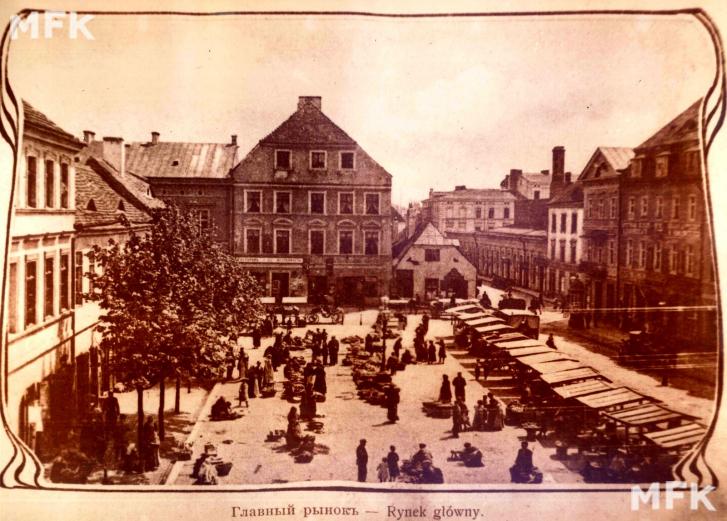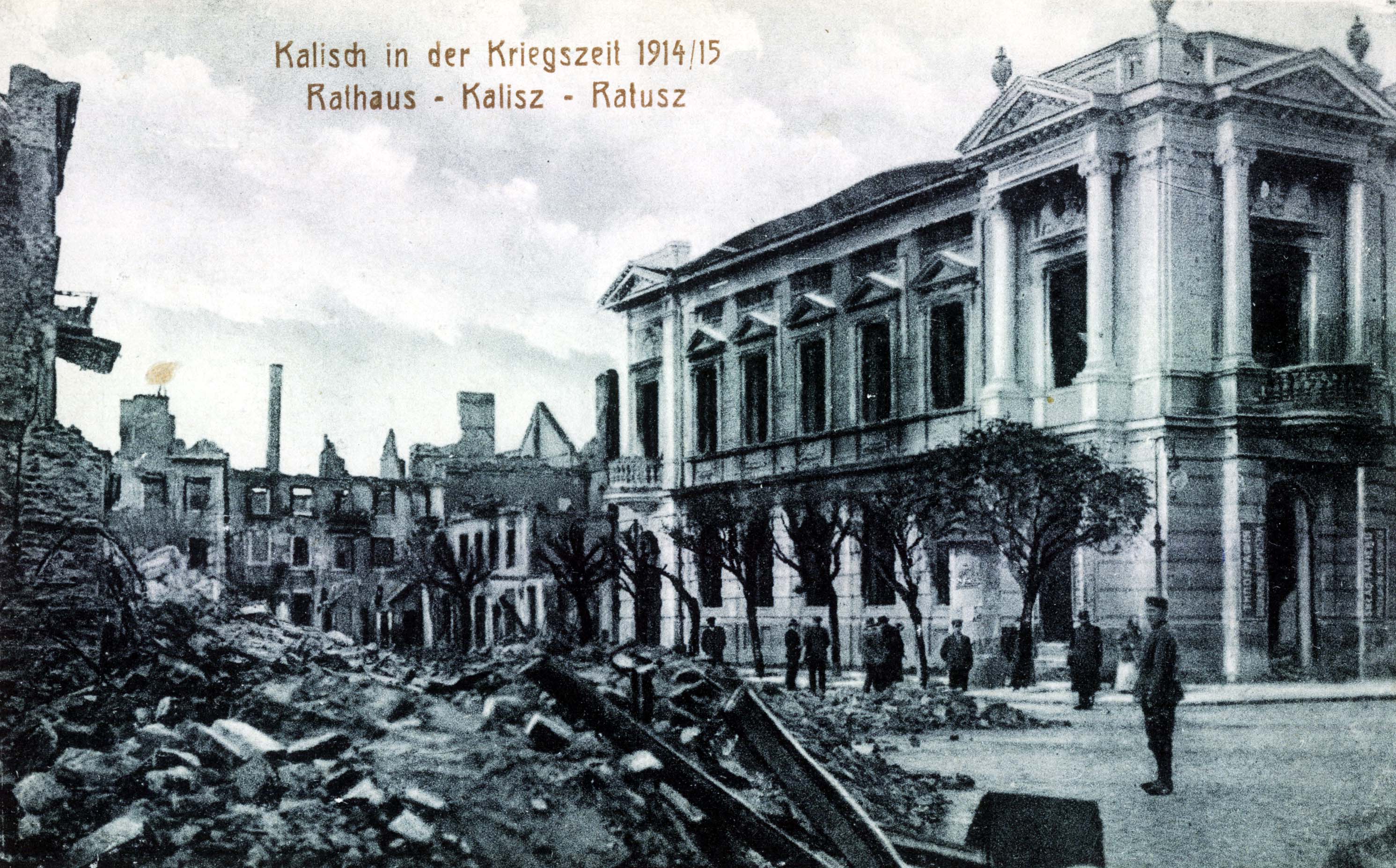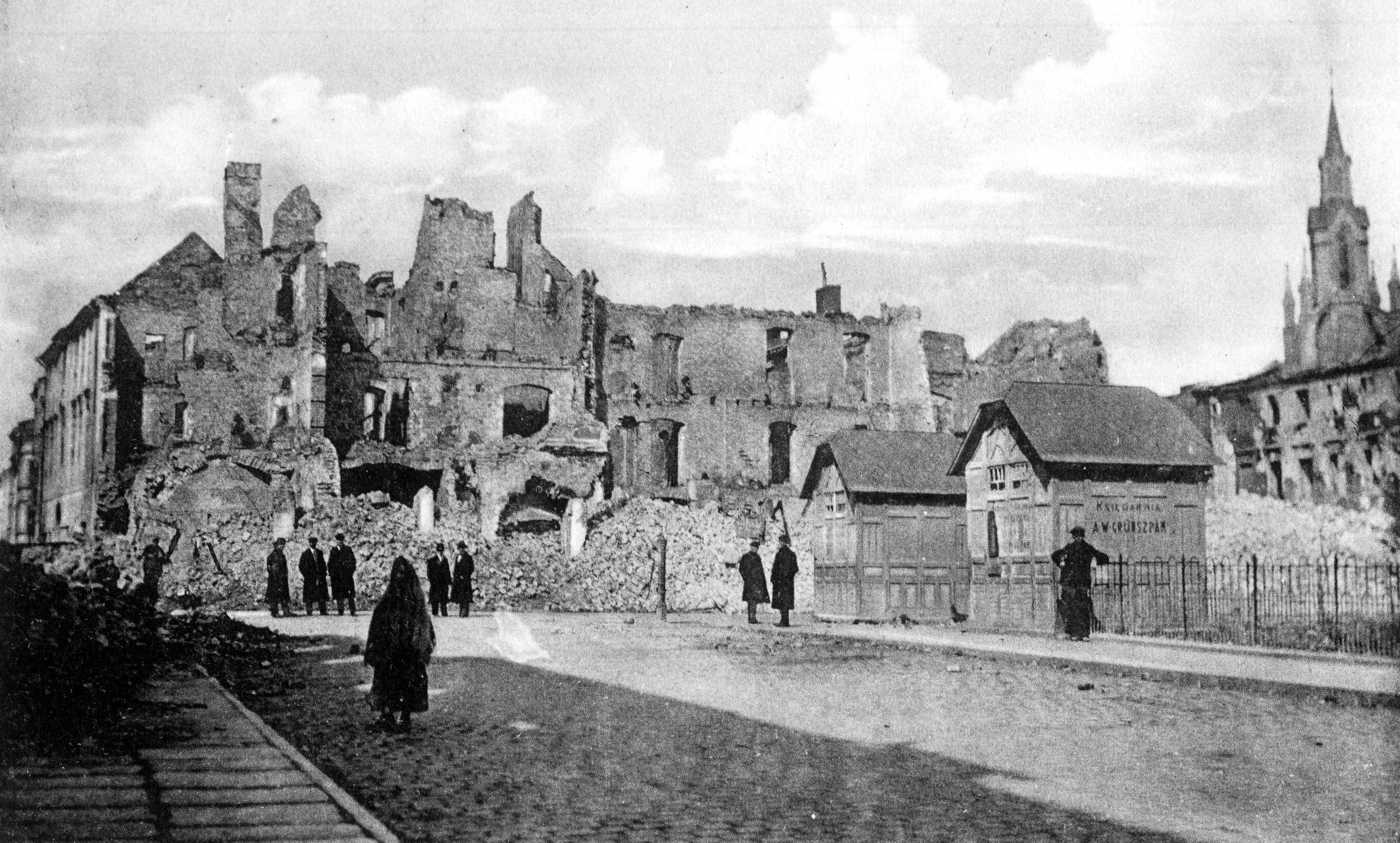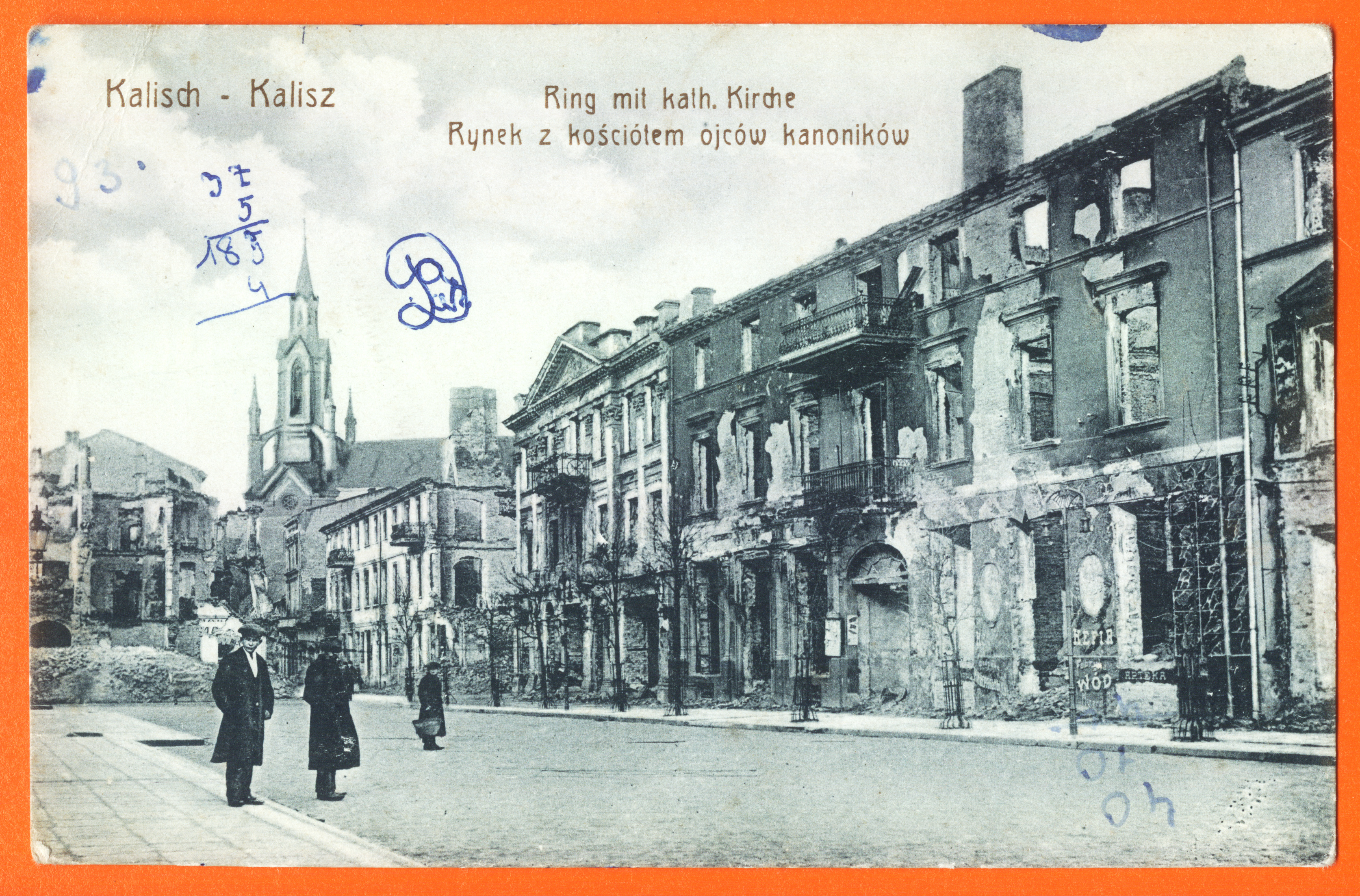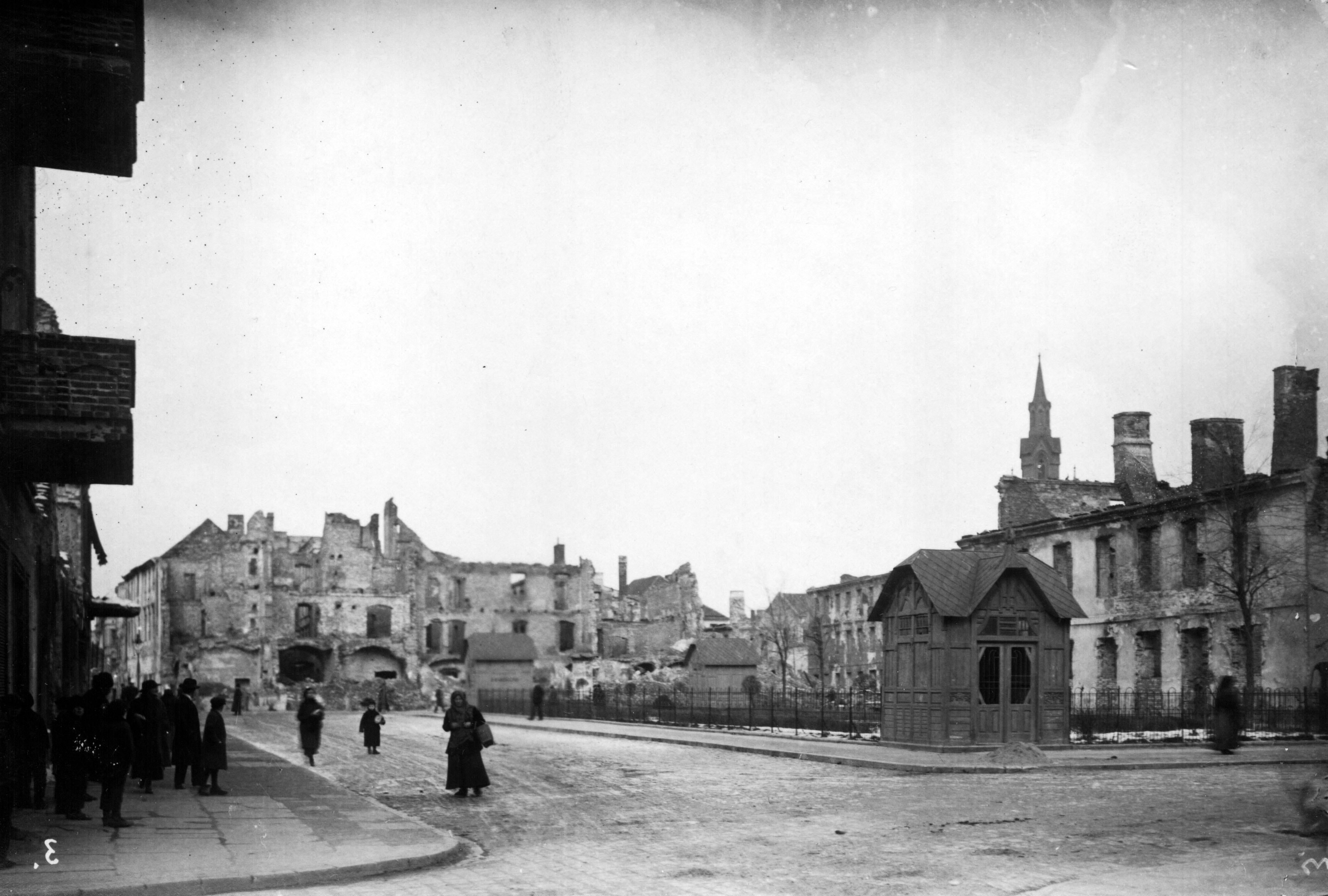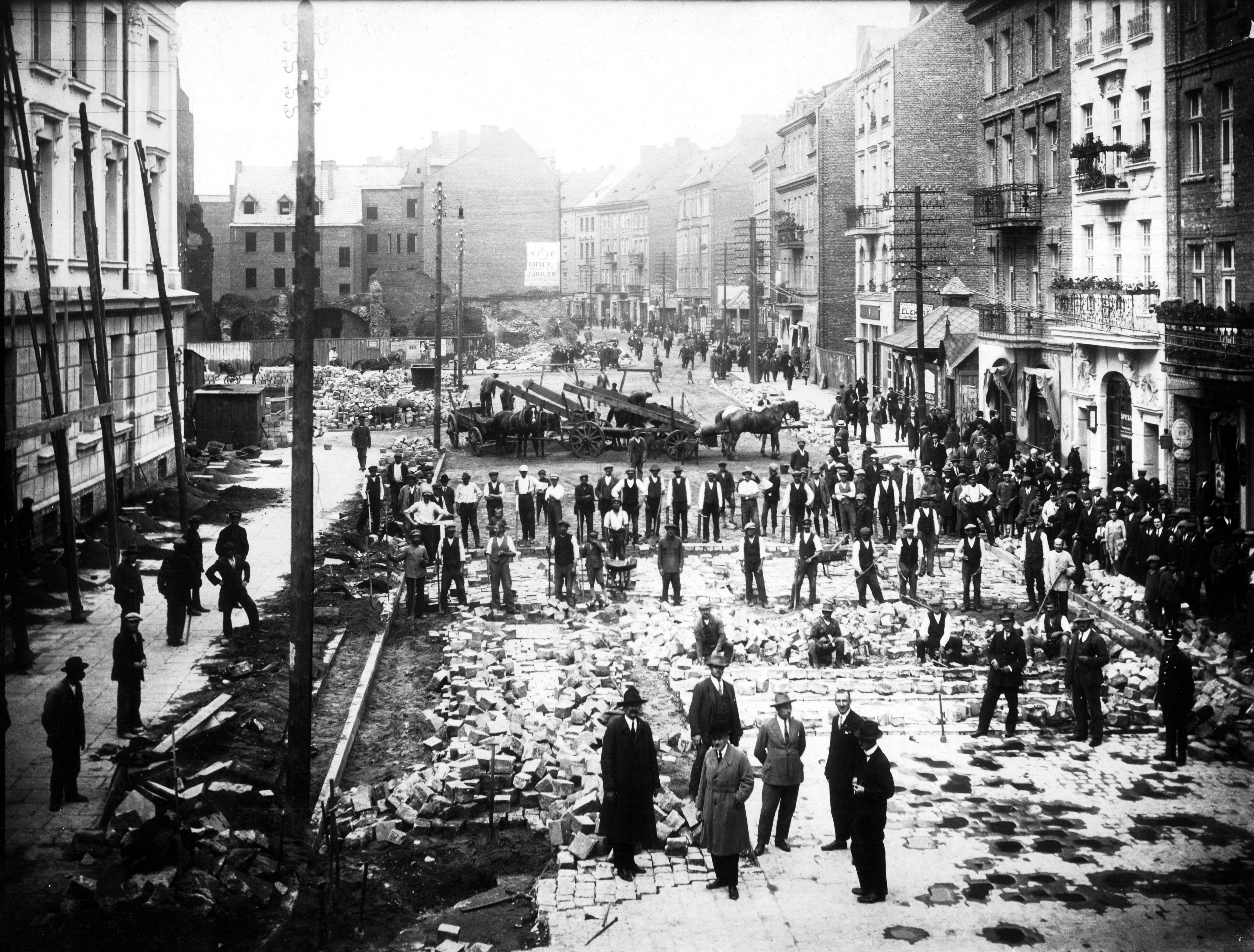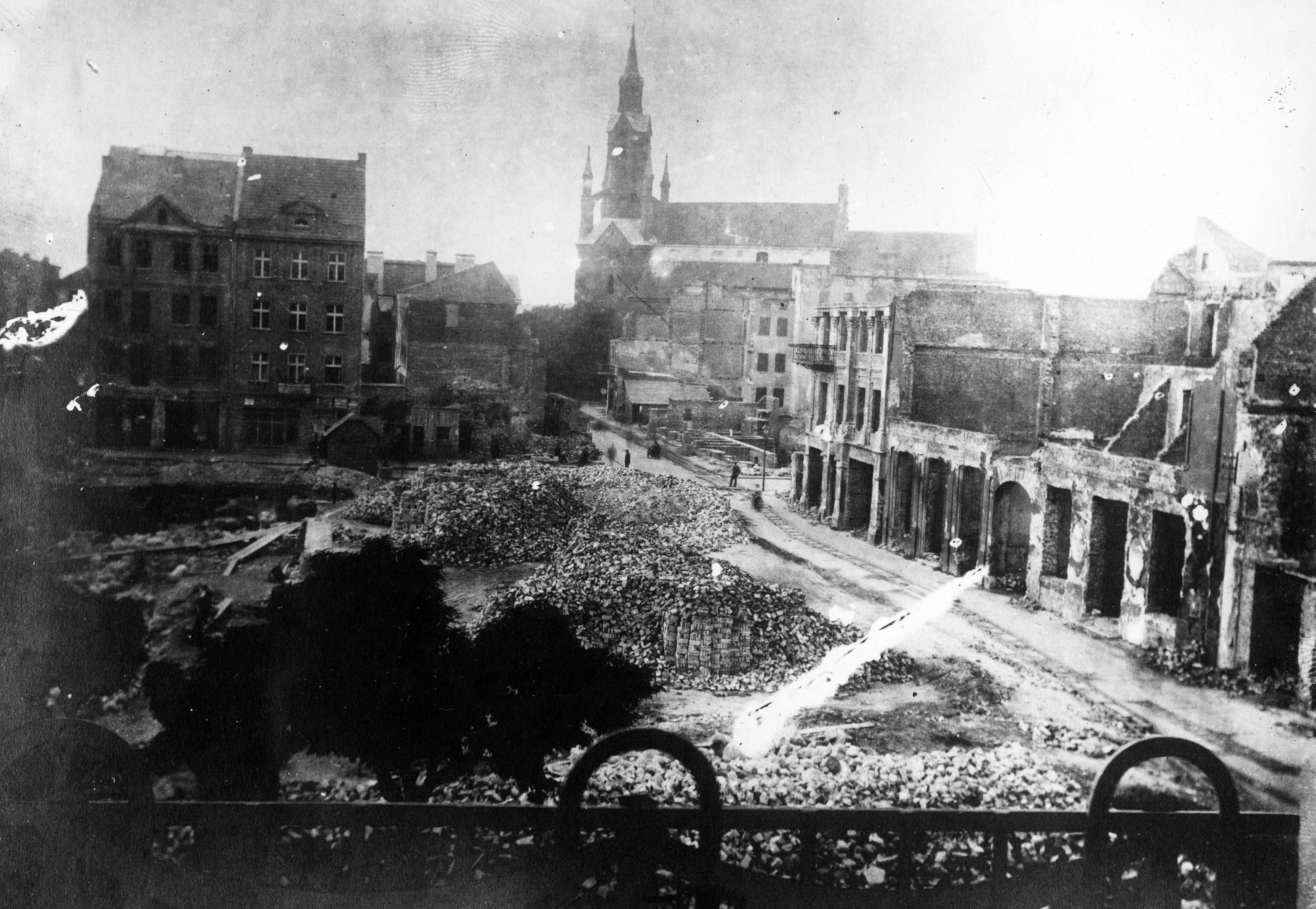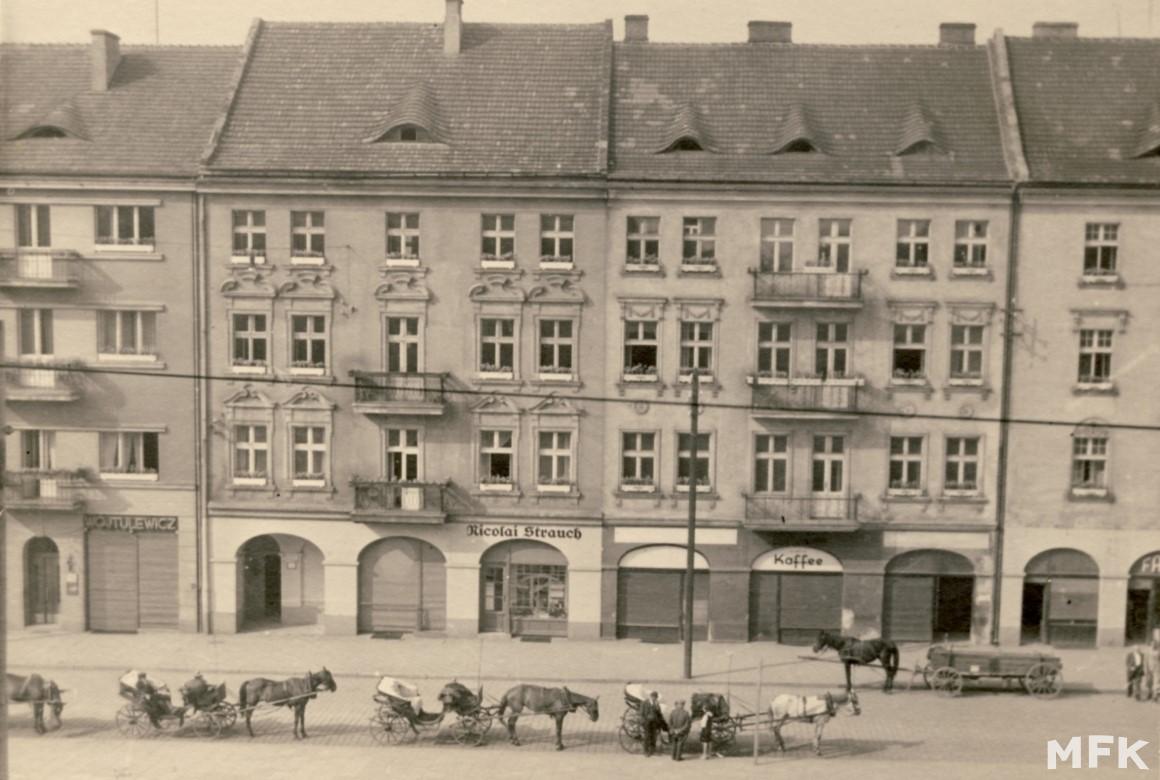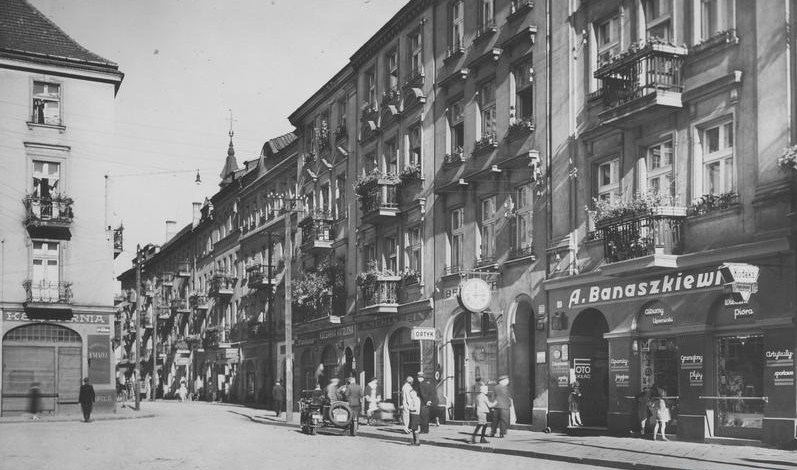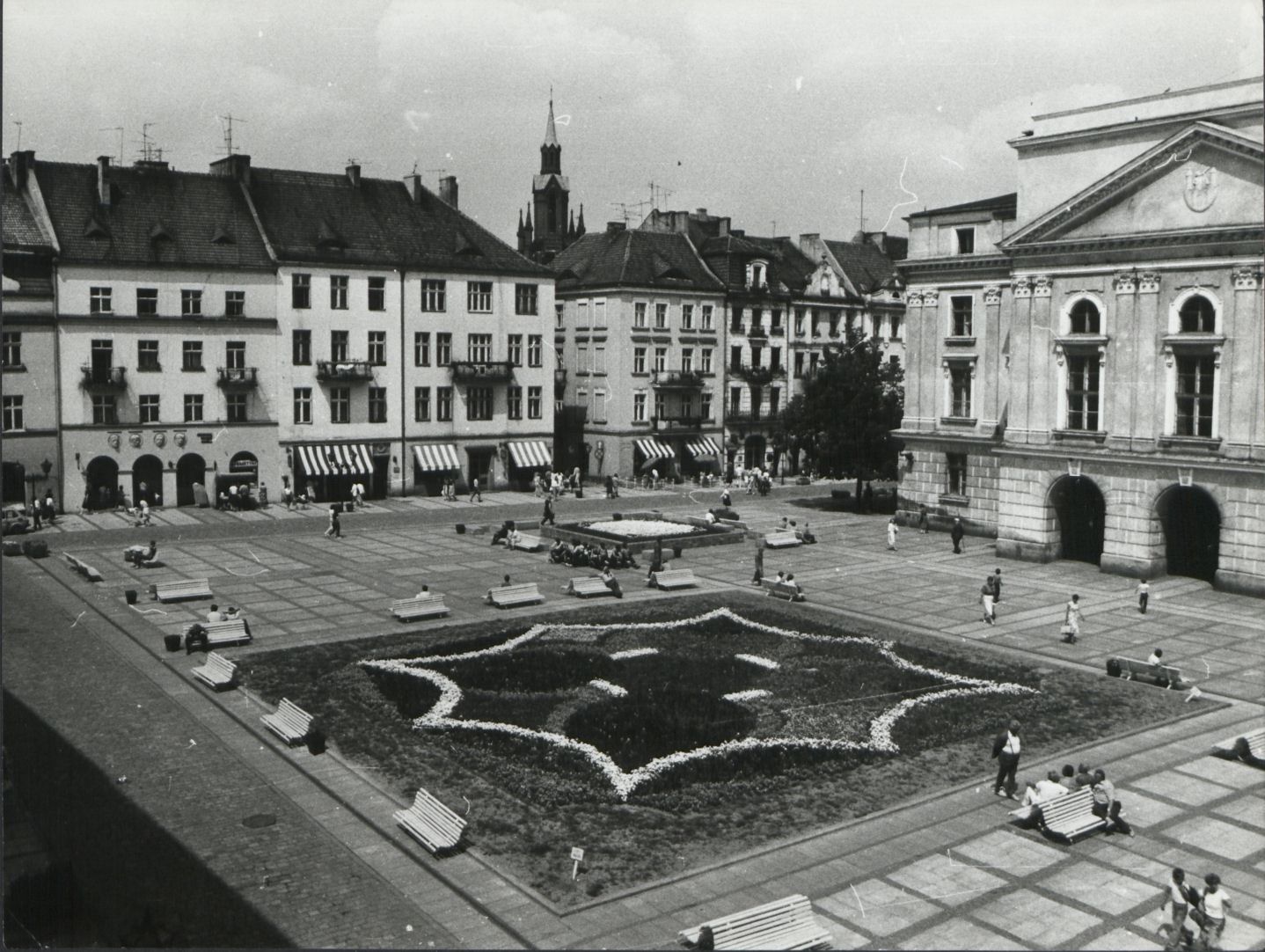
Historia Głównego Rynku.
Wytyczony został w drugiej połowie XIII w. podczas zagospodarowywania przestrzennego miasta lokacyjnego założonego przez księcia wielkopolskiego Bolesława Pobożnego. Posiada prostokątny kształt i wymiary około 115 x 90 metrów. Wybiega z niego dziesięć ulic, które pierwotnie prowadziły w kierunku bram miejskich i muru obronnego.
Zajmuje centralne miejsce dzisiejszego śródmieścia. Początkowo zwany był Rynkiem, a od początku XIX w. Rynkiem Głównym. W 1872 r. określony został mianem Głównego Rynku. Od 1934 r. nosił nazwę Placu 11 Listopada, a od 1950 r. – Placu Bohaterów Stalingradu. Obecną nazwę wprowadzono w 1989 roku.
Na przełomie XIV i XV w. na środku rynku zbudowano ratusz, obok którego stały dawniej sukiennice i kramy kupieckie (ławy i jatki), które usunięte zostały w 1872 roku. Przeniesiono je na wytyczony wówczas nowy plac targowy nazwany Placem św. Mikołaja (dzisiejszy Nowy Rynek).
W 1776 r. rynek otrzymał oświetlenie latarniami olejowymi, które później zastąpiły latarnie naftowe, a w 1871 r. – gazowe.
Ratusz wielokrotnie ulegał zniszczeniom spowodowanym przez liczne pożary. Posiadał wysoką, sześćdziesięciometrową wieżę z zegarem. Spłonął całkowicie podczas wielkiego pożaru miasta, który miał miejsce we wrześniu 1792 roku. Drugi budynek ratusza – zniszczony przez żołnierzy pruskich na początku I wojny światowej – zbudowany został w latach 1888-1890 według projektu Józefa Chrzanowskiego, jako trójkondygnacyjna, bezwieżowa budowla o secesyjnej szacie architektonicznej. Obecny gmach ratusza wzniesiony został w latach 1919-1925 według projektu opracowanego przez Sylwestra Pajzderskiego. Posiada on wysoką, prawie sześćdziesięciometrową wieżę z zegarem i z tarasem widokowym na szczycie.
Zabudowa mieszkalna stojąca wokół rynku była najczęściej murowana, ale ulegała licznym zniszczeniom w trakcie pożarów. Całkowitej zagłady doznała na progu I wojny światowej – w sierpniu 1914 roku. Obecna pochodzi – nie licząc jednego domu zbudowanego w 1957 r. – z lat 1919-1933.

The square came about in the second half of the 13th century at the time of space planning the chartered town founded by the prince Boleslaus the Pious. It is rectangular in shape with sides of 115 m and 90 m. Ten streets start here, which once ran towards town gates and town walls.
It occupies the central position in the today’s inner city. At the beginning it was called Rynek [Market Square] and since the beginning of the 19th century it was called Rynek Główny [Main Market Square]. From 1872 to 1934 it was called Główny Rynek. In 1934 it got a new name; Plac 11 listopada [November 11 Square]. In 1950 the name was changed into Plac Bohaterów Stalingradu [Heroes of Stalingrad Square].The present name was introduced in 1989.
At the turn of the 14th and the 15th century, in the middle of the square, a town hall was built, next to which, cloth halls, stalls, shambles and benches stood. In 1872 these old-fashioned commercial facilities were removed from the main town square to find their place in the new market square called Plac św. Mikołaja [Saint Nicolas Square], today’s Nowy Rynek [New Market].
Since 1776 r. the square was lit by oil lamps, then by kerosine lamps, and since 1872 by gas ones.
The town hall was many times destroyed by fires. It had a sixty-metre tall tower with a clock. The building completely burnt down during the great fire in September 1792. The second in turn building of the town hall, built in the years 1888-1890, was destroyed by the Prussian soldiers at the beginning of the First World War. The edifice was designed by the architect Józef Chrzanowski as a three-storey towerless structure of a Secession style. The present building of the town hall designed by Sylwester Pajzderski was built in the years 1919-1925. It has a sixty-metre tall tower with a clock and a viewing terrace at the top of the tower.
Most of the residential buildings around the town hall were made of brick, nevertheless many of them burnt down at the time of fires. All the buildings were completely destroyed at the brink of the war. The present tenement houses, apart from a single one from 1957, were built in the years 1919-1933.
Zdjęcia ze strony Wirtualnego Muzeum Fotografii Kalisza www.wmf.kalisz.pl
